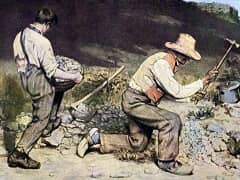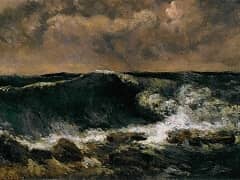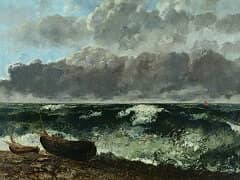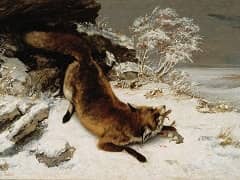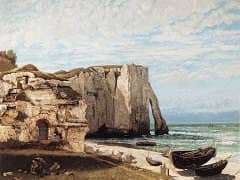Rocks at Mouthier, 1860s by Gustave Courbet
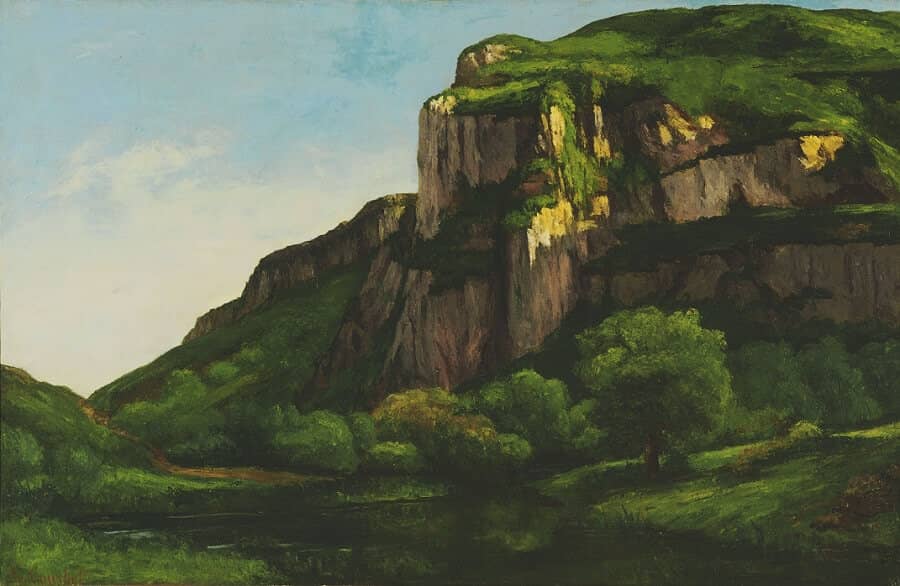
Rocks at Mouthier is a simple and powerful statement of one of Courbet's recurrent landscape themes, that of the high steep cliff structure of the region around Ornans. Like Cezanne's Mont Ste. Victoire, the cliffs of the Doubs region had an ancient existence in fact, but only became a part of the visual imagination of the culture through the work of the artist. As a painter of landscape in his time Courbet took on the burden of choice; it was up to him to decide where he would focus his gaze and in what way he would compose the elements on the surface of the canvas. He was drawn to these rock formations for a number of reasons. It was among them that he had grown up, played, walked, and hunted from his earliest years.
As he matured and became aware of the history of his own region, Courbet saw them increasingly as symbols of its rugged strength and fortress-like independence, the very qualities that he was absorbing into the concept of his own role as an artist. The endless variety of their chalky surfaces, the way they revealed the cuts and scumbles of historical time, were a stimulus to the invention of new techniques of paint application with which to build a pictorial equivalent of their fractured mass. Petra Chu has documented further sources of Courbet's interest in these ancient geological structures, which were the subject of scientific study at the time by local friends and colleagues. Chu argues convincingly that Courbet's paintings of rocky caves and cliffs reveal his profound awareness of their long history and the way in which time has shaped the landscape. This evolutionary understanding of the land, emerging in the later eighteenth century and gradually becoming established among men of learning in the early nineteenth, formed the basis of the science of geology and in turn for the later development of Darwinian theory.
Courbet was no scientist, but he had a natural affinity for these ideas because of their application to his beloved cliffs and because they provided a philosophical underpinning for his own deep attachment to the local landscape. In his early paintings, he takes a more panoramic view; Rocks at Mouthier is characteristic of his mature work in that the motif, regardless of the space depicted, is brought close to the picture plane. This intense awareness of presence derives from the way in which the paint is handled and by means of the remarkable composition, in which the looming cliffs are made to nearly squeeze the sky out of the upper right edge of the canvas. The site has been identified as that of the Rochers de Hautepierre, behind the village of Mouthier-Haute-Pierre, about ten miles to the southeast of Ornans.





